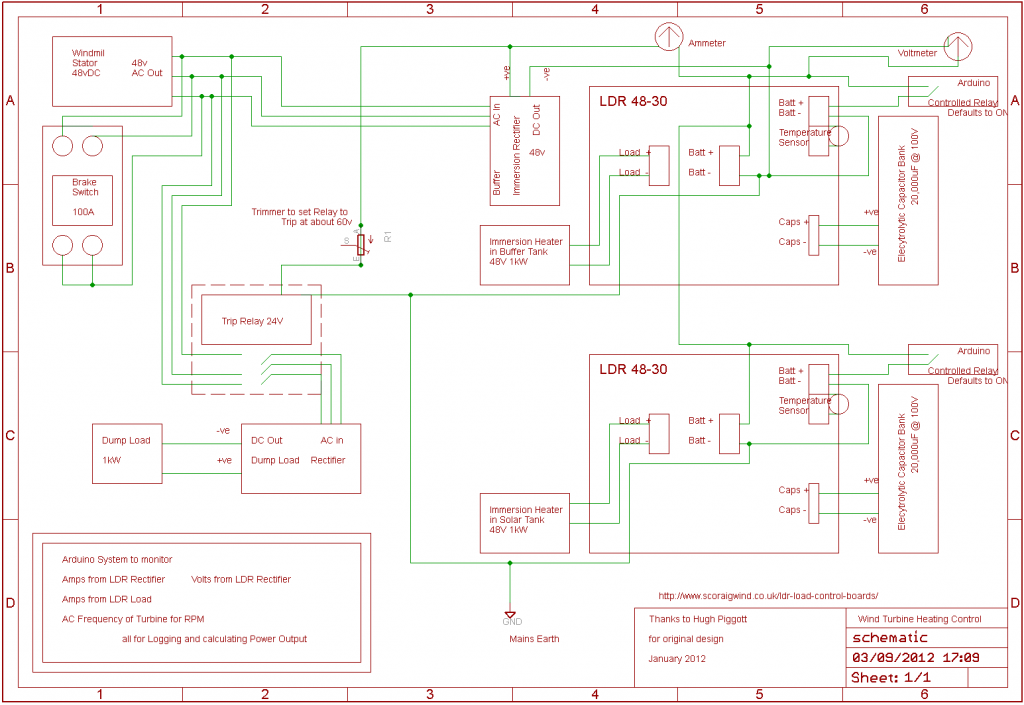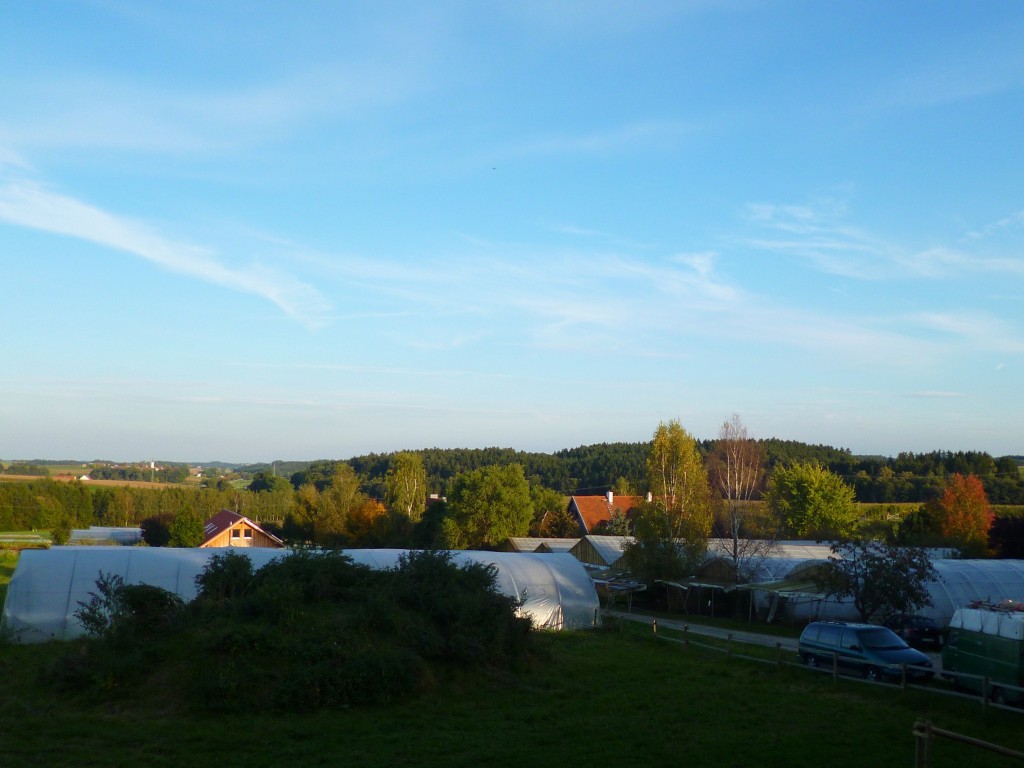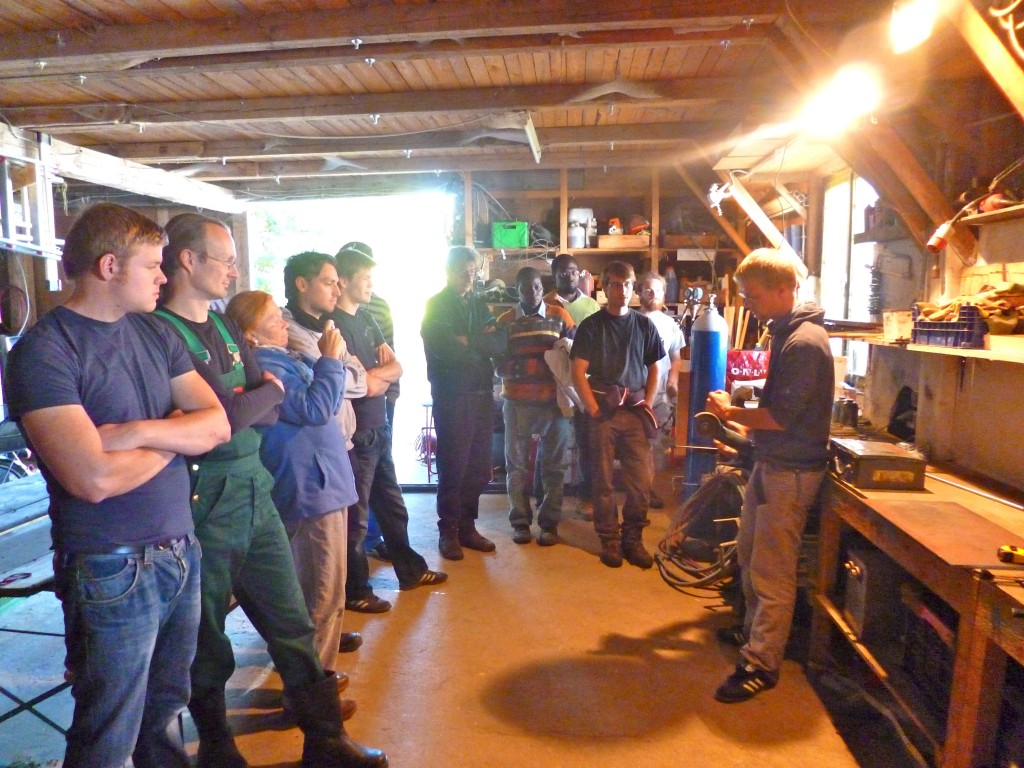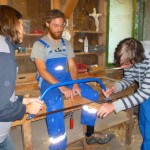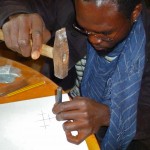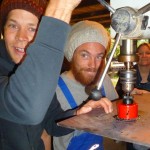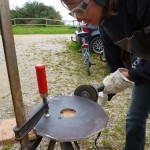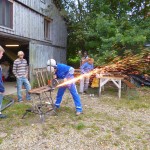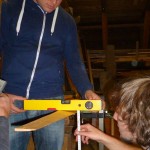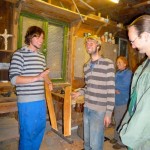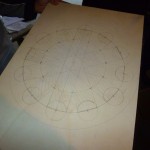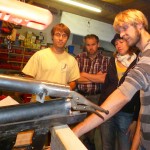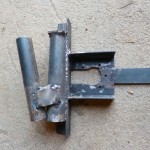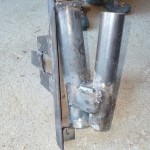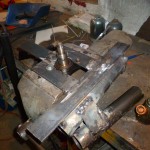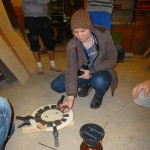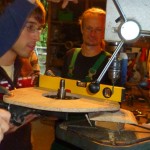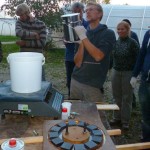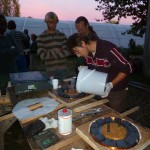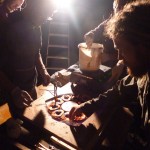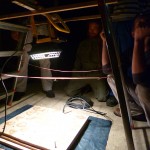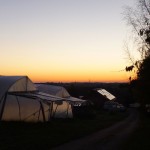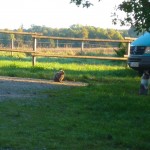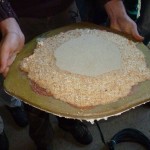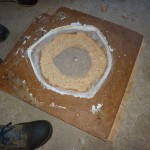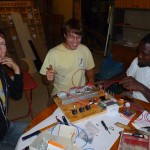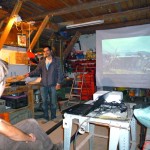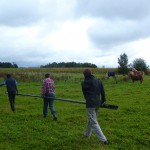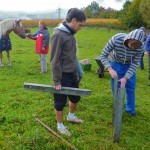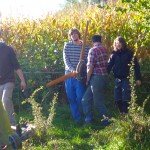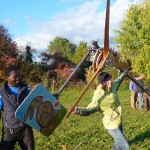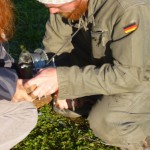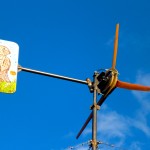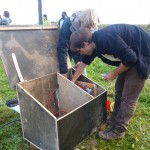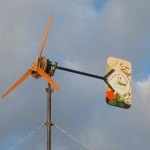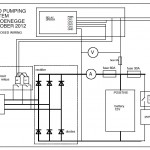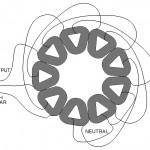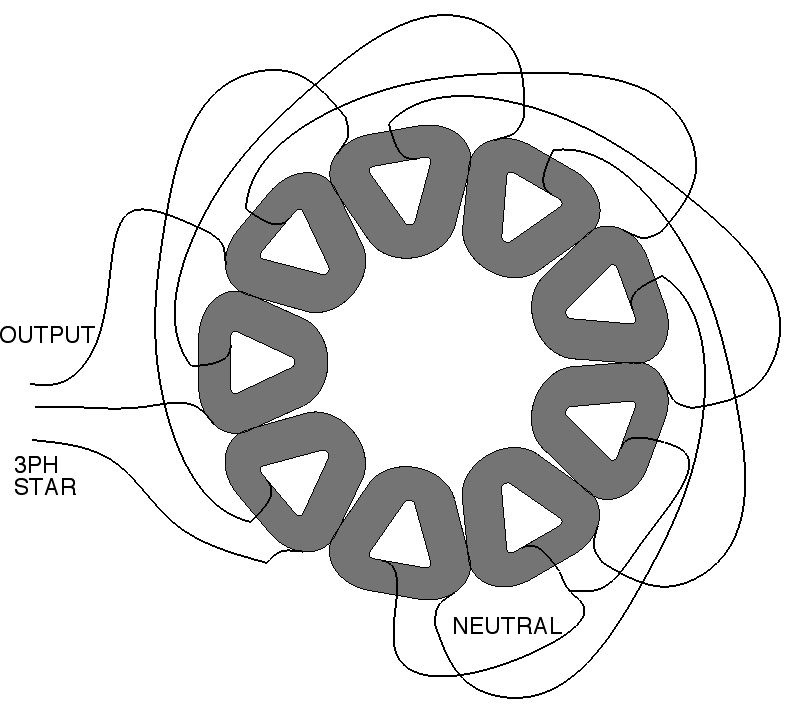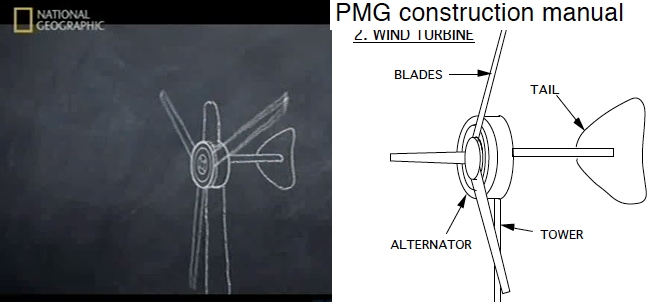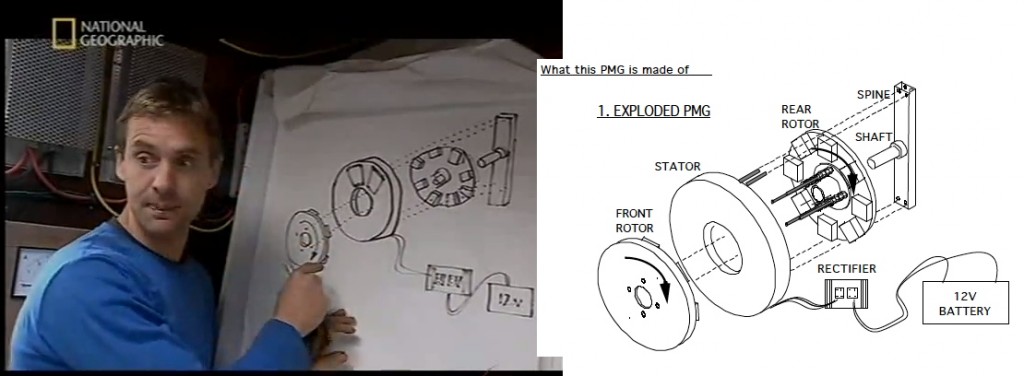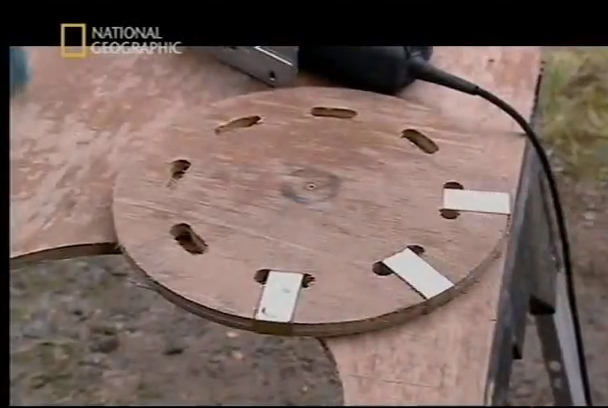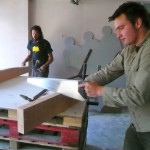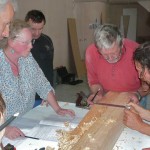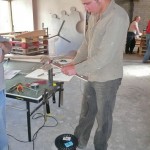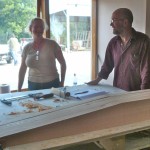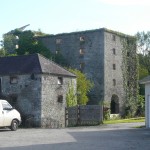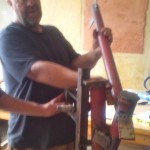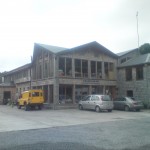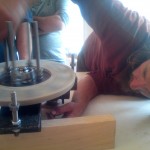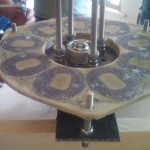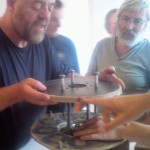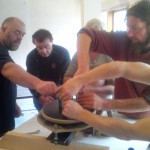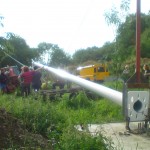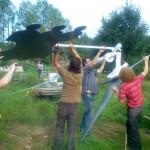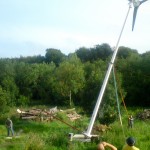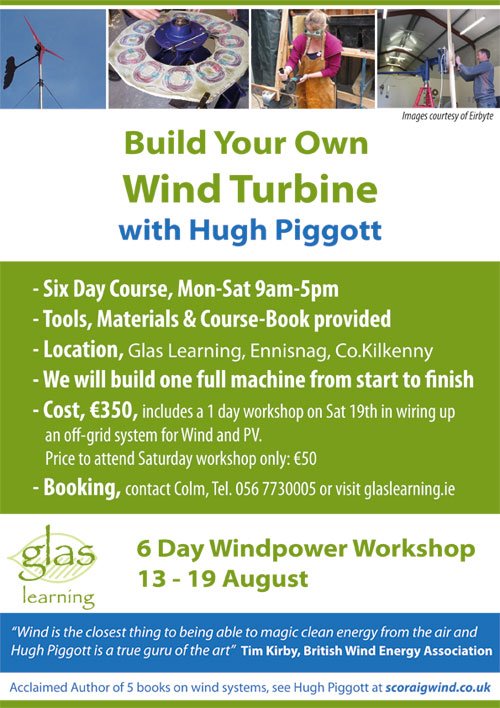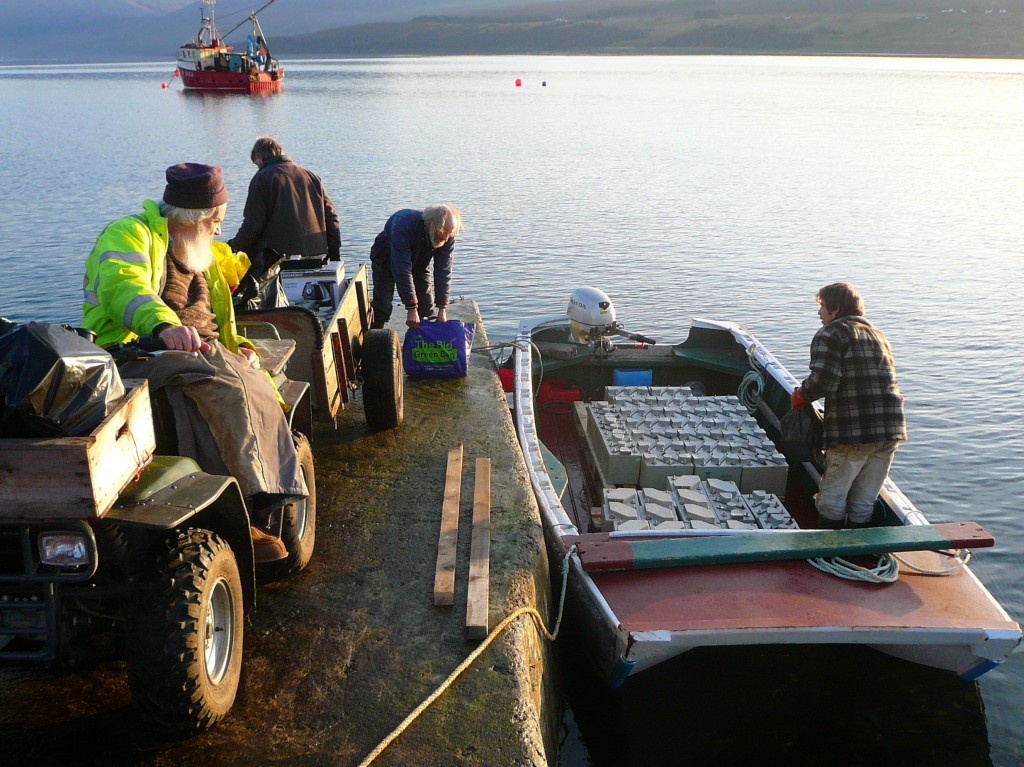Although it has been almost five years since my Wind Turbine Recipe Book first went on sale, I am still actively updating it and improving the advice I give to make it simpler, more reliable and more efficient.
This summer I have studied the effects of different wire sizes in the cables that connect the wind turbine to the battery. Some energy is lost in these cables, so it would seem obvious that a thicker cables would always be best. Thicker cables have lower resistance and waste less energy. Conventional wisdom is to try to reduce transmission losses below a target level such as 4%, by choosing thick enough wires.
However the alternators in the Recipe book (using neo magnets) are already so efficient that they make it difficult to match a battery charging turbine to the blades. A battery will operate at nearly fixed voltage that only changes a small amount in a manner largely outwith our control (based on its state of charge). An efficient alternator working at constant voltage will force the blades to work at a near constant speed. The speed that is optimum for low winds will be much too slow as the wind gets stronger and so the blades are liable to stall, especially if a low battery voltage clamps the speed down even lower than usual.
Although it has not been documented in the recipes before, I tend to use rather long, thin wires in my own installations for various reasons. A long cable allows me to reach a good wind site (hilltop etc) whereas a thin cable is cheaper than a thick one. I have noticed that the blades run so much better with a bit of loss in the cable that the overall performance is just as good or better with these long, thin wires.
Now I have got around to documenting this philosophy in the form of some wire sizing tables for the recipe designs. First you will need to choose a size that can carry the current without over-heating, but after that there is no advantage to using a larger size unless your wire-run from the turbine to the battery is longer than the ‘minimum distances’ suggested in the second set of tables. There are an awful lot of options here with sizes, voltages and units of measure, so please excuse the complexity of the tables, and also do remember these are guides and not dictates so you do not have to follow them slavishly.
Here are some minimum recommended wire sizes for both DC wiring and for 3-phase AC circuits feeding 24-V or 48-V rectifiers, allowing for occasional over-currents. The first table is metric, with wire sizes in square mm:
|
Diameter
|
1200
|
1800
|
2400
|
3000
|
3600 +
|
|
Nominal Power
|
200 W
|
350 W
|
700 W
|
800 W
|
1 kW
|
|
12-VDC
|
2.5
|
6
|
16
|
25
|
25
|
|
24-VDC
|
1.0
|
2.5
|
6
|
6
|
10
|
|
48-VDC
|
1.0
|
1.0
|
2.5
|
2.5
|
4
|
|
24-VAC
|
0.7
|
1.5
|
4
|
4
|
6
|
|
48-VAC
|
0.5
|
0.5
|
1.5
|
1.5
|
2.5
|
And now in North American units and AWG sizes:
|
Diameter
|
4’
|
6’
|
8’
|
10’
|
12-14’
|
|
Nominal Power
|
200 W
|
350 W
|
700 W
|
800 W
|
1 kW
|
|
12-VDC
|
#13
|
#9
|
#5
|
#3
|
#2
|
|
24-VDC
|
#16
|
#13
|
#9
|
#7
|
#5
|
|
48-VDC
|
#18
|
#17
|
#13
|
#13
|
#11
|
|
24-VAC
|
#18
|
#15
|
#11
|
#9
|
#7
|
|
48-VAC
|
#20
|
#19
|
#15
|
#15
|
#13
|
And now here are the minimum lengths of wire run (2-core 12-V DC or 3-core AC cable) from the wind turbine to the battery using the above wires sizes. The length includes the tower height. If the length is much less, then the turbine may run too slowly and stall when battery voltage is low. If the length is more, then you can benefit from using thicker wires. The first table gives the suggested lengths in metres:
| Turbine diameter |
1200
|
1800
|
2400
|
3000
|
3600
|
4200
|
|
12-V
|
30
|
30
|
60
|
50
|
50
|
20
|
|
24-V
|
25
|
25
|
55
|
45
|
40
|
15
|
|
48-V
|
65
|
30
|
80
|
60
|
70
|
20
|
And finally here are minimum wire runs (one way) in feet based on using the AWG sizes above:
| Turbine diameter |
4’
|
6’
|
8’
|
10’
|
12’
|
14’
|
|
12-V
|
50
|
50
|
150
|
150
|
150
|
50
|
|
24-V
|
50
|
50
|
150
|
150
|
150
|
50
|
|
48-V
|
150
|
100
|
200
|
150
|
150
|
50
|
Again – please don’t get hung up on minor differences of a few percent in these figures. They are estimates based on my best guesses in a world full of variables. No two wind turbines are the same. But paying some heed to these tables will help you to keep your turbine running sweetly and balance the aerodynamic requirements with the electrical ones in a cost-effective way.

